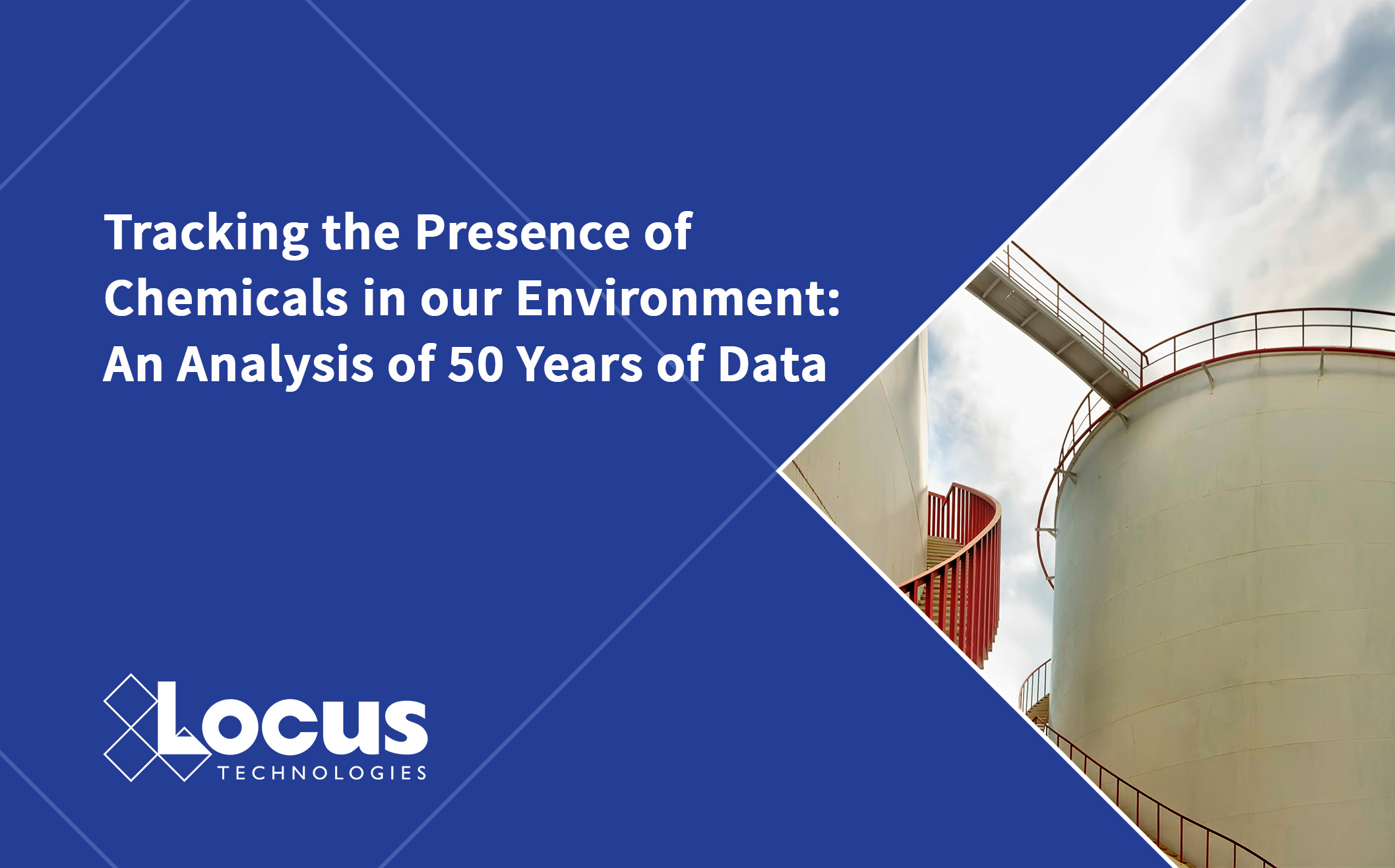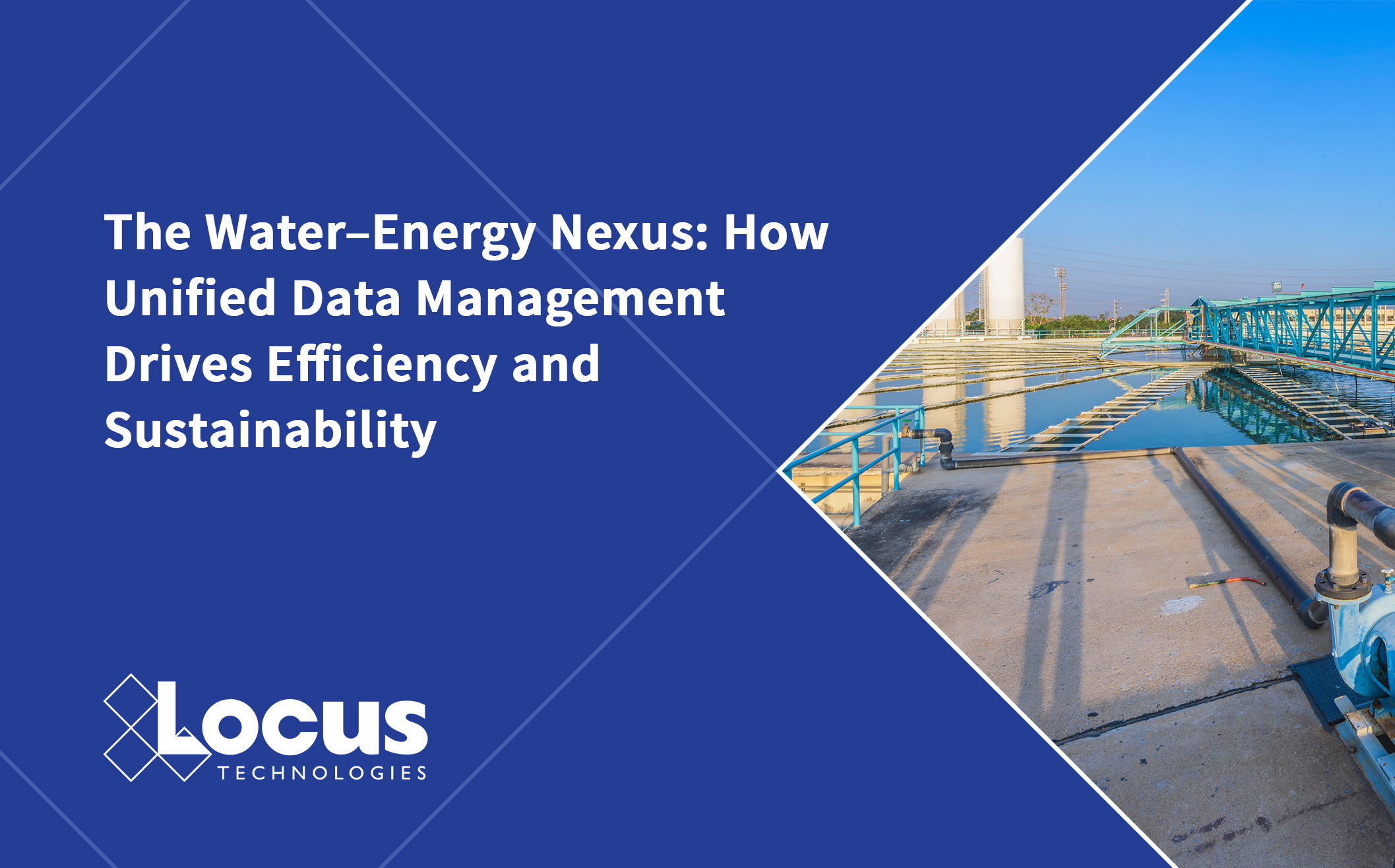
Since Locus was founded in 1997, customers have trusted us to manage their sensitive environmental data. For some customers, this data spans several decades and illustrates changes in environmental regulations and sampling methods. We recently looked for sampling trends in the data stored in EIM, Locus’s cloud-based, software-as-a-service application for environmental data management.
While EIM stores data going back to 1950, 98% of the samples were taken in 1975 or after, so we excluded data before 1975. We organized the sampled chemicals into groups to simplify the data. We then created a chart showing the most sampled chemical groups for each year from 1975 to 2025. The resulting “Fifty Years of Chemical Sampling in Locus EIM’ is shown in the linked video. Each bar shows the cumulative sample count for a chemical group, with the groups ranked to show the top twelve groups in each year.
The animated bar graph shows several interesting trends in the relative ranking of the chemical groups. In the early years when Locus was ramping up, the chart shows some noise due to the rapid growth of companies using EIM. However, given the number of companies that now use EIM, plus the wide variety of industries those customers represent, Locus believes the trends after 1990 reflect changes in the environmental sampling industry and its related regulatory requirements. These trends stand out:
- Radionuclides (such as uranium or plutonium) started at the #1 position but moved down in the mid 1980s and finished in last place in 2025. Nuclear weapons testing and production in the mid-20th century required considerable sampling as part of remediation and cleanup efforts.1 However, after the 1980s sampling dropped off relative to other chemicals due to nuclear testing bans in the 1960s and the successful cleanup of nuclear facilities in the 1980s and 1990s.2
- Halogenated Solvents (such as chloroform or trichloroethylene) climbed in the rankings quickly and was #1 from the mid-1980s until 2000, after which it dropped to second place. These solvents were widely used in electronics, metal-degreasing, and dry cleaning in the mid-20th century, which led to soil and groundwater contamination and the need for sampling.3 While legacy contamination continues today, increased awareness, better regulations, and material substitution has led to lowered sampling levels.4
- Petroleum Hydrocarbons (found in oil, gasoline, and diesel) has been at the top of the rankings for the last 25 years. Sources of petroleum contaminants such as spills, urban runoff, abandoned storage tanks, and leaking vehicles have increased during the 20th century.5 At the same time, the 1980s and 1990s saw increased regulation of underground storage tanks and petroleum releases along with expanded monitoring for petroleum markers.6 This chemical group is likely to stay #1 for some time.
- Persistent Organic Pollutants (POPs) such as PCBs rose steadily from 1978 onwards and is currently in third place. These chemicals started to be regulated in the 1970s. Because they are chemically persistent, bioaccumulative, and remain detectable decades after use7, sampling for these chemicals has increased over time even as new use of these chemicals declined.8
- Metal Pollutants (such as iron, copper, and zinc) have been in the top five for every year, and Heavy Metal Pollutants (such as lead, mercury, and cadmium) have always been in the top ten. These metals have many sources including mining, smelting, leaded gasoline, and industrial discharges, and they can remain persistent and measurable in soils and sediments for decades.9 This long-term presence explains the steady rankings of these categories in the video.
- PFAS has risen steadily over the last 25 years. PFAS have been used for many decades, starting in 1938 with Teflon, but routine sampling and improved analytical sampling methods only started in the 2000s-2010s. Recent US federal and state regulations and the high media attention to these “forever chemicals” have all contributed to the increase in sampling.10 The PFAS group is expected to continue moving up the chart.
Sampling trends come and go as regulations change to cover different chemicals and as new chemicals are discovered in the environment. As Locus starts managing another half century of sampling data, our software can continue to handle your data even as the regulatory environment and sampling methods change.
Locus is the only self-funded water, air, soil, biological, energy, and waste EHS software company that is still owned and managed by its founder. The brightest minds in environmental science, embodied carbon, CO2 emissions, refrigerants, and PFAS hang their hats at Locus, and they’ve helped us to become a market leader in EHS software. Every client-facing employee at Locus has an advanced degree in science or professional EHS experience, and they incubate new ideas every day – such as how machine learning, AI, blockchain, and the Internet of Things will up the ante for EHS software, ESG, and sustainability.



